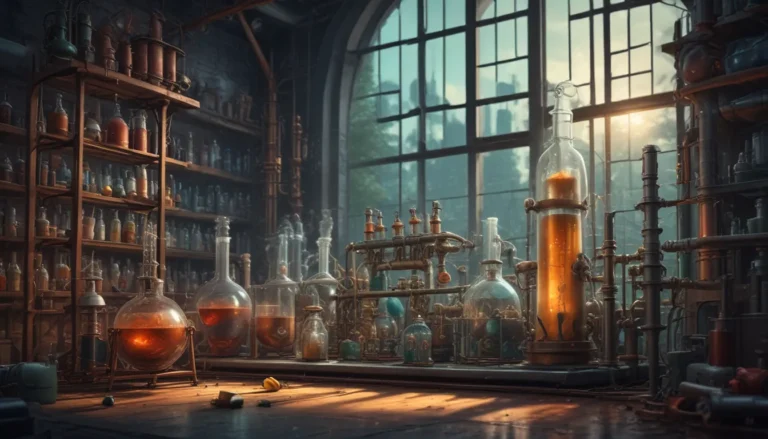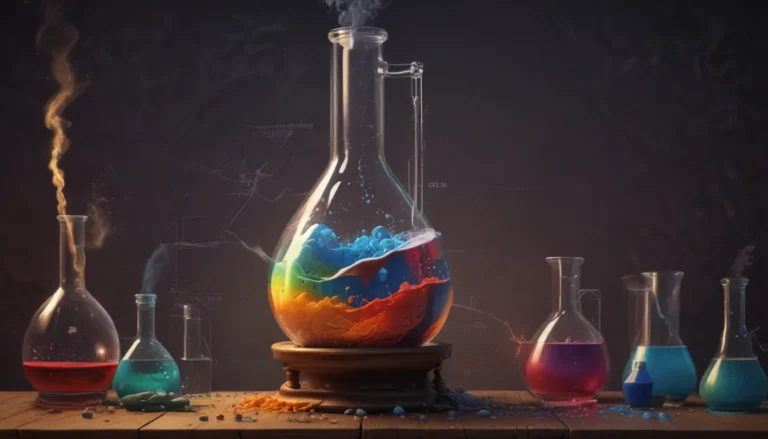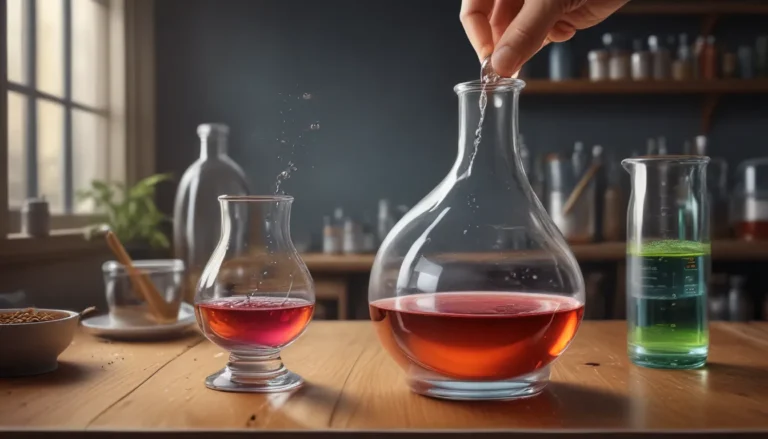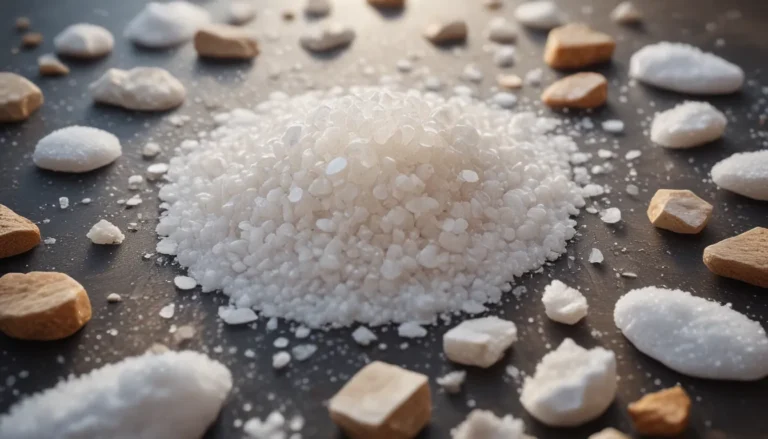A Note About Images: The images used in our articles are for illustration purposes only and may not exactly match the content. They are meant to engage readers, but the text should be relied upon for accurate information.
Welcome to the realm of autoprotolysis, a captivating chemical phenomenon that unveils the intricate web of connections in the molecular world. Autoprotolysis involves the self-ionization of a substance, where molecules transfer protons to each other, resulting in the formation of ions. From its role in maintaining pH balance in biological systems to its applications in various scientific disciplines, autoprotolysis is a phenomenon worth exploring. In this article, we will take a deep dive into the extraordinary facts about autoprotolysis that will enrich your understanding of this chemical marvel and showcase its importance in the world of science.
Unveiling Autoprotolysis: A Chemical Marvel
Autoprotolysis, also known as self-ionization, is a unique chemical process where molecules of a solvent exhibit dual behavior as both acids and bases, facilitating the spontaneous transfer of protons without the need for external factors. This inherent property allows for the formation of ions within the substance, leading to a dynamic equilibrium.
Water: The Epitome of Autoprotolysis
Among the myriad examples of autoprotolysis, water stands out as a quintessential illustration of this phenomenon. In the self-ionization of water, two water molecules engage in a delicate dance, giving rise to hydronium ions (H3O+) and hydroxide ions (OH-). This equilibrium reaction not only influences the pH scale but also underpins numerous chemical processes.
Diverse Solvents, Common Autoprotolysis
While water takes the spotlight in autoprotolysis studies, other solvents also showcase this phenomenon. Take ammonia, for instance, which undergoes self-ionization to produce ammonium ions (NH4+) and amide ions (NH2-), highlighting the versatility of autoprotolysis in various solvents.
Balancing Act: Autoprotolysis Influences Acidity and Basicity
The autoprotolysis of a solvent plays a pivotal role in determining its acid and base strengths. The equilibrium between hydronium and hydroxide ions dictates the pH level, with higher concentrations of hydronium ions signaling acidity and elevated levels of hydroxide ions indicating basicity.
The Autoprotolysis Constant: Quantifying Self-Ionization Extent
In the realm of autoprotolysis, the autoprotolysis constant (Kw) serves as a vital tool for measuring the extent of self-ionization within a solvent. For water, Kw at 25°C stands at 1.0 x 10^-14, underscoring the subtle acidic nature of water due to the presence of hydronium and hydroxide ions.
A Foundation for Acid-Base Chemistry
Autoprotolysis forms the bedrock of acid-base chemistry, offering insights into the strength of acids and bases and aiding in the prediction of acid-base reactions. By unraveling the intricacies of self-ionization, scientists can navigate the vast landscape of chemical interactions with precision.
Amphoteric Marvels: Autoprotolysis and Amphoteric Substances
Amphoterism, the ability of substances to act as both acids and bases, finds its roots in autoprotolysis. Through this phenomenon, compounds like aluminum hydroxide showcase their amphoteric nature, engaging as acids in the presence of bases and as bases in the company of acids.
Water’s Transformative Journey: Autoprotolysis and Physical Properties
The self-ionization of water exerts a profound influence on its physical properties, altering aspects such as boiling point, freezing point, and density. These modifications stem from the dynamic interplay between hydronium and hydroxide ions, reshaping the fabric of water’s molecular structure.
Temperature Ride: Autoprotolysis’ Thermally-Driven Path
Temperature emerges as a significant player in the realm of autoprotolysis, amplifying the rate of self-ionization with its upward trajectory. Elevated temperatures fuel molecular collisions, fostering increased self-ionization within the solvent and paving the way for dynamic chemical transformations.
Dynamic Equilibrium: Autoprotolysis’ Reversible Nature
Much like a delicate dance, autoprotolysis exhibits a reversible nature, where the formation of hydronium and hydroxide ions can seamlessly revert to water molecules under specific conditions. This intricate balance maintains equilibrium within the system, orchestrating a harmonious interplay of chemical forces.
From Molecules to Life: Autoprotolysis in Biological Realms
The autoprotolysis of water holds profound implications in biological systems, shaping the pH balance within living organisms and modulating enzymatic reactions, cellular processes, and overall bodily functions. Its subtle influence reverberates through the intricate tapestry of life, underscoring the significance of proton transfer in vital biological processes.
A Canvas for Exploration: Autoprotolysis’ Ongoing Odyssey
Despite its established presence in the realm of chemistry, autoprotolysis remains a subject of active exploration and research. Scientists delve into new solvents, unravel the effects of temperature and pressure, and probe the far-reaching implications of autoprotolysis across diverse fields of chemistry, unveiling new vistas of understanding and discovery.
Embracing the Marvel: Autoprotolysis’ Glimmering Legacy
In conclusion, autoprotolysis stands as a captivating phenomenon that beckons exploration and discovery. These 12 extraordinary facts illuminate the intricate dance of protons within solvents, showcasing the subtle yet profound impact of autoprotolysis on chemical reactions and biological systems. From catalysis to acid-base chemistry, the legacy of autoprotolysis continues to captivate scientists worldwide, paving the way for new horizons in scientific inquiry.
FAQs: Unveiling Autoprotolysis’ Enigmas
What is autoprotolysis?
Autoprotolysis is a self-ionization process within certain compounds, where molecules donate protons to each other, leading to the formation of conjugate acids and bases.
What are some examples of compounds undergoing autoprotolysis?
Common instances of autoprotolysis include water, ammonia, alcohols, and carboxylic acids, showcasing the diverse array of solvents featuring this phenomenon.
How does autoprotolysis impact the acidity and basicity of compounds?
Autoprotolysis plays a pivotal role in establishing the acid-base equilibrium of a compound, influencing pH levels and determining the relative strengths of acids and bases within the system.
What are the applications of autoprotolysis?
Autoprotolysis finds applications in fields such as catalysis, acid-base chemistry, and electrochemistry, offering insights into solvent behavior, acid-base strengths, and efficient chemical reactions.
Can autoprotolysis occur in non-aqueous solvents?
Indeed, autoprotolysis transcends aqueous realms, manifesting in non-aqueous solvents like alcohols and carboxylic acids through proton transfer between molecules.
Is autoprotolysis reversible?
Yes, autoprotolysis features a reversible nature, allowing for the seamless transition between the formation of conjugate acid and base species, fostering equilibrium within the system.
How does temperature influence autoprotolysis?
Temperature exerts a significant effect on autoprotolysis, amplifying the rate of proton transfer and self-ionization, thereby influencing the equilibrium constant and dynamic equilibrium within the system.
Join the Journey: Exploring Autoprotolysis Together
As we unravel the intricate web of autoprotolysis, we invite you to delve into the enigmatic world of proton transfer and molecular dance. From the subtleties of solvents to the profound implications in biological systems, autoprotolysis beckons exploration and discovery, offering a tapestry of marvels waiting to be unveiled. Join us on this odyssey of scientific inquiry and uncover the hidden depths of autoprotolysis, a phenomenon that continues to captivate and inspire generations of curious minds.






